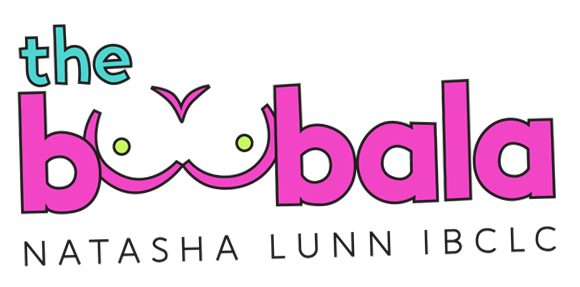Page Content [show]
The Impact of Smoking on Breast Milk
Smoking while breastfeeding is a topic of significant concern for new mothers, as it can have various effects on both milk production and the quality of breast milk. Understanding these implications is crucial for the health of both mother and child.
Effects on Milk Production and Composition
Research indicates that smoking can lead to a decrease in milk production. Specifically, mothers who smoke more than 10 cigarettes a day may experience a notable reduction in their milk supply, which can affect their ability to adequately nourish their infants. Additionally, the composition of breast milk can be altered by smoking. Studies have shown that the milk of smoking mothers tends to have a lower fat content, which is essential for a baby’s growth and development. This change in composition can potentially impact the nutritional quality of the milk, even if the overall volume remains sufficient.
Nicotine Transfer and Infant Behavior
When a breastfeeding mother smokes, nicotine is transferred into her breast milk. The levels of nicotine in breast milk peak shortly after smoking and then gradually decline. This transfer can lead to behavioral changes in infants, such as reduced sleep duration immediately following maternal smoking sessions. Infants whose mothers smoke may also exhibit increased fussiness and colic, which can be distressing for both the baby and the mother.
Recommendations for Smoking Mothers
Health professionals strongly recommend that mothers who smoke should quit smoking as soon as possible to minimize risks to their infants. However, if quitting is not immediately feasible, it is advised to smoke right after breastfeeding rather than before, to limit the amount of nicotine passed into the milk during feeding. This timing can help reduce the exposure of the infant to harmful substances.
Conclusion
In summary, smoking while breastfeeding can negatively affect both milk production and the quality of breast milk, potentially leading to lower fat content and behavioral issues in infants. While the best course of action is to quit smoking entirely, understanding how to manage smoking habits can help mitigate some risks associated with breastfeeding. Mothers are encouraged to seek support and resources to assist in quitting for the health of both themselves and their babies.
How long do you have to wait to breastfeed after smoking?
Breastfeeding and cigarette smoke
Nicotine passes rapidly into your breast milk and affects how much milk you have. Nicotine in breast milk and passive smoking can give your baby chest infections, vomiting, diarrhoea and irritability. Avoid smoking for half an hour before you breastfeed.
How much nicotine passes to breastmilk?
Baseline levels of nicotine (nonsmoking day: 10.2 ± 4.4 ng/mL; smoking day: 12.4 ± 4.0 ng/mL) and cotinine (nonsmoking day: 154.3 ± 31.8 ng/mL; smoking day: 141.3 ± 31.4 ng/mL) in mothers’ milk at the beginning of each testing session were similar.
How long to wait after smoking to hold a baby?
They should change their outer clothes on return, wash their hands and rinse their mouth – traces of smoke can linger on clothing and then be released back into the atmosphere of the room they’re in for up to three hours after smoking. After smoking they should wait at least 25 minutes before handling a baby.
What should you not do while breastfeeding?
What foods and drinks should I limit or avoid while breastfeeding?
- Alcohol. There’s no level of alcohol in breast milk that’s considered safe for a baby.
- Caffeine. Avoid drinking more than 2 to 3 cups (16 to 24 ounces) of caffeinated drinks a day.
- Fish. Seafood can be a great source of protein and omega-3 fatty acids.
Can smoke pass through breast milk?
Using tobacco or electronic cigarettes (e-cigarettes) while breastfeeding can allow harmful chemicals to pass from the mother to the infant through breast milk or secondhand smoke exposure. Mothers who use tobacco or e-cigarettes should be encouraged to quit.
Should I pump and dump after I smoke?
You shouldn’t use the pump and dump method, says Cross, because cannabis is still in breast milk for several days after use.
What drugs pass through breast milk?
Most drug molecules, including alcohol, nicotine and caffeine, are small enough to enter milk. Exceptions are drugs with high molecular weights such as heparins and insulin.
How long does it take for cigarette smoke to leave breast milk?
While smoking, nicotine enters the breast in high concentrations, and after 2 hours, the concentration is reduced to half. Nicotine takes about 10 hours to leave the bloodstream and from breast milk completely, without any traces.
Should I still breastfeed if I vape?
E-cigarettes, vaping and breastfeeding
New mums are advised to use licensed NRT products for help with quitting smoking and staying smokefree. However, if you do choose to use an e-cigarette to help you stay smokefree, it’s still better to carry on breastfeeding as the benefits will outweigh any potential harm.
How much nicotine is passed in breast milk?
Taking into account the body weight of each infant, the estimated dose of nicotine delivered to the infants increased significantly from 127.1 ± 59.8 ng/kg during the nonsmoking test session to 548.9 ± 233.0 ng/kg during the test session in which the mothers had smoked recently (P = . 03).

